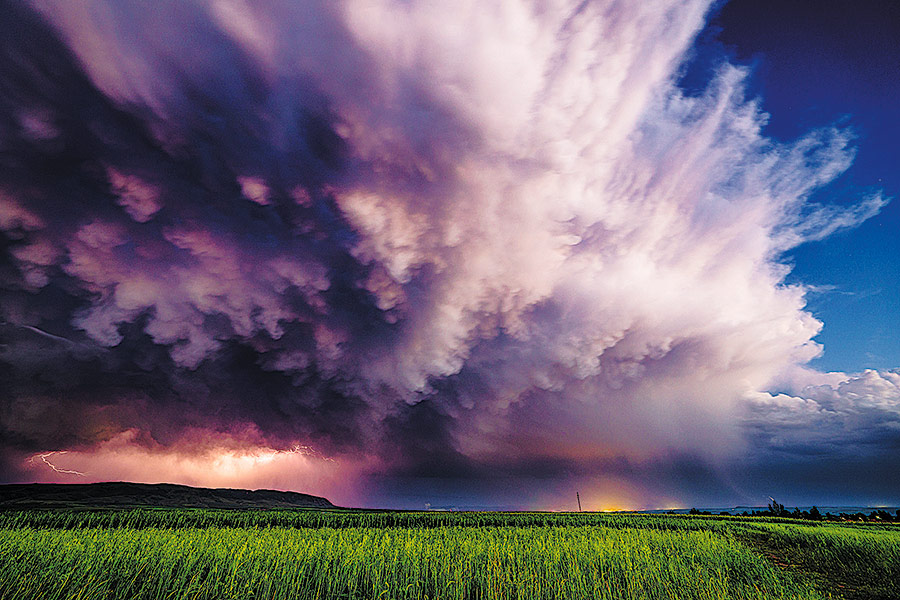

"A strong storm can move at a speed of 50 to 60 kilometers per hour, which means that if you want to catch its pace, the average speed of the car should be about 70 km an hour," Liu says, adding that, in crowded cities, it is almost impossible to drive that fast. On the wide-open prairies of Inner Mongolia, however, that is not the case.
"Dry air facilitates high visibility, enabling us to see storms forming even hundreds of kilometers away," he explains. "It is important for storm chasers to be able to predict a storm's direction."
Although his first attempt was not fruitful, on a second trip to Hulunbuir, Inner Mongolia, in August 2020, he took a photo that he treasures to this day.
"It was a supercell evolving into a squall line. In front of it, there was a shelf cloud hanging in the air like an incredible long wall, rushing toward me. To capture the complete time-lapse video of it, I stayed until the last possible minute, the point when the gusts became too strong," Liu recalls. The wind speeds were beyond the top of the range, recorded at 24.5 to 28.4 meters per second. This was confirmed later when he listened to breaking news on the car radio.
The strong wind smashed one of his cameras and Liu had to grab hold of the roof rack on his off-road vehicle so that the wind would not blow him away. The gale lasted about five minutes before the hail descended with a venom.
"Although it was dangerous, the images and videos gave me confidence and encouragement that I can handle storm photography as a lifelong career in China," Liu says.
For him, a safe distance for shooting is between 5 km and 10 km away from a storm. He always emphasizes in his posts that storm photography is quite dangerous, warning people not to take unnecessary risks.